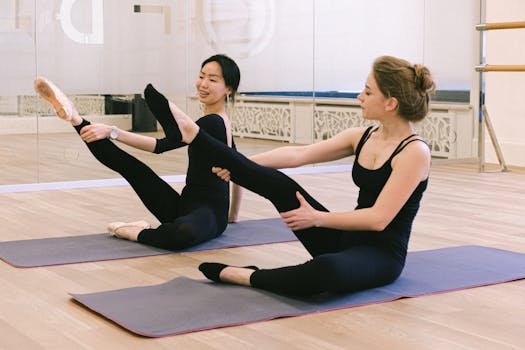Unlocking Serenity: Essential Mindfulness Meditation Techniques for Everyday Life
Takeaways: Mindfulness meditation can transform your mental well-being by reducing stress and improving focus. Key techniques include breath awareness, body scan, and mindful walking. With consistent practice, these methods can help you cultivate a more peaceful, present life.
In today’s fast-paced world, the concept of mindfulness has gained immense popularity as a way to combat stress and enhance mental clarity. Mindfulness meditation is an effective practice that encourages being present in the moment and fully experiencing life as it unfolds. In this article, we will explore various mindfulness meditation techniques that can help you cultivate a deeper sense of awareness and tranquility.
Understanding Mindfulness Meditation
Mindfulness meditation is rooted in ancient Buddhist practices but has been adapted for contemporary use. At its core, mindfulness is the practice of maintaining a moment-by-moment awareness of our thoughts, feelings, bodily sensations, and surrounding environment. By observing our experiences without judgment, we can develop a greater understanding of ourselves and our reactions.
This practice is not about suppressing thoughts or emotions but rather about noticing them and allowing them to come and go without attachment. Research has shown that mindfulness meditation can reduce stress, improve emotional regulation, and enhance overall well-being. Let’s delve into some essential techniques that you can incorporate into your daily routine.
1. Breath Awareness
One of the simplest and most effective mindfulness meditation techniques is breath awareness. This technique involves focusing your attention on your breath as it flows in and out. Here’s how to practice it:
- Find a comfortable position: Sit or lie down in a quiet space where you won’t be disturbed.
- Close your eyes: Gently close your eyes to minimize distractions.
- Focus on your breath: Begin to pay attention to your breathing. Notice the sensation of the air entering your nostrils, filling your lungs, and exiting your body.
- Notice your thoughts: As thoughts arise, acknowledge them without judgment and gently redirect your focus back to your breath.
- Practice regularly: Aim to practice for at least 5-10 minutes each day, gradually increasing the duration as you become more comfortable.
This technique not only calms the mind but also helps anchor you in the present moment, making it invaluable for reducing anxiety and stress.
2. Body Scan Meditation
The body scan is a powerful mindfulness meditation technique that promotes relaxation and body awareness. It involves mentally scanning your body for areas of tension and consciously relaxing them. Here’s how to perform a body scan:
- Lie down comfortably: Find a quiet space and lie flat on your back, arms at your sides.
- Close your eyes: Allow your body to relax and focus your attention inward.
- Start at your toes: Begin the scan at your toes, noticing any sensations, tension, or discomfort.
- Move upward: Gradually shift your attention up through your feet, legs, torso, arms, neck, and head, pausing at each area to observe how it feels.
- Release tension: As you identify areas of tension, consciously breathe into them and visualize releasing that tension with each exhale.
Body scan meditation can help you develop a deeper connection with your body, making it easier to release stress and improve your overall physical health.
3. Mindful Walking
Mindful walking is a form of meditation that combines the benefits of physical activity with mindfulness. It’s a great way to practice mindfulness in motion and can be done almost anywhere. To practice mindful walking, follow these steps:
- Choose your path: Find a quiet place where you can walk without distractions, whether indoors or outdoors.
- Start slowly: Begin to walk at a slow and deliberate pace, paying close attention to each step.
- Focus on your movements: Notice the sensations in your feet as they make contact with the ground, the movement of your legs, and the rhythm of your breath.
- Stay present: If your mind begins to wander, gently guide your focus back to your body and the act of walking.
- Incorporate nature: If possible, practice mindful walking in a natural setting, allowing the sights, sounds, and smells to enhance your experience.
Mindful walking not only helps to clear your mind but also allows you to appreciate the beauty of your surroundings, fostering a sense of gratitude and connection.
Integrating Mindfulness Into Your Daily Life
Incorporating mindfulness meditation techniques into your everyday routine can lead to significant improvements in your mental health and overall well-being. Here are a few tips to help you integrate mindfulness into your daily life:
- Start small: Begin with just a few minutes of mindfulness practice each day and gradually increase the duration as you become more comfortable.
- Set reminders: Use reminders on your phone or sticky notes around your home to encourage you to pause and practice mindfulness throughout the day.
- Mindful eating: Practice mindfulness during meals by savoring each bite, noticing the flavors, and being present while you eat.
- Morning routine: Incorporate mindfulness into your morning routine by dedicating a few minutes to meditation or breath awareness before starting your day.
- Evening reflection: Spend a few moments each evening reflecting on your day, acknowledging your thoughts and feelings without judgment.
By embracing these mindfulness meditation techniques, you can unlock a greater sense of peace and clarity in your life. With consistent practice, the benefits of mindfulness can extend beyond your meditation sessions, positively impacting your relationships, work, and overall outlook on life.


